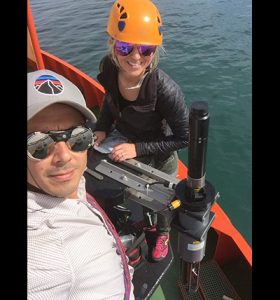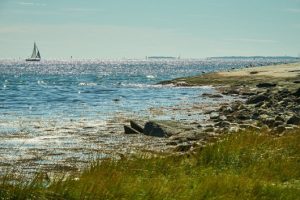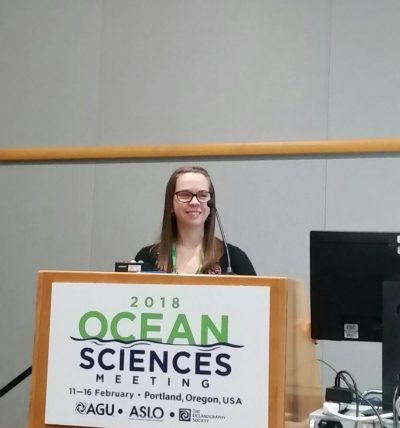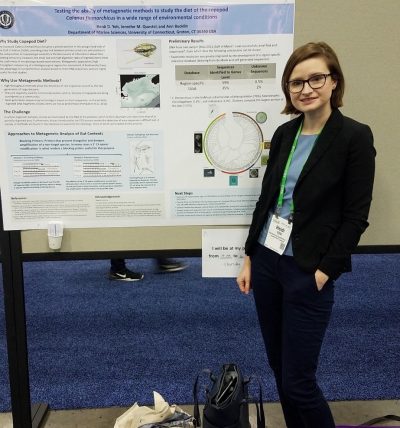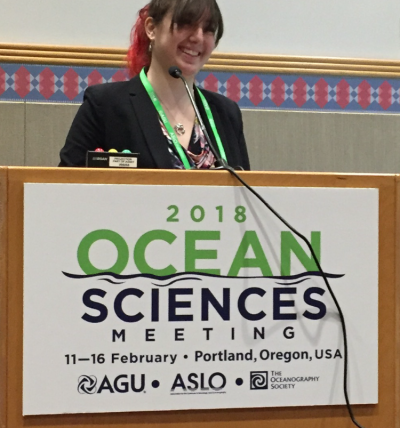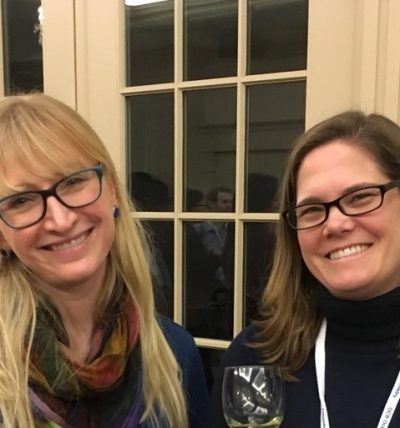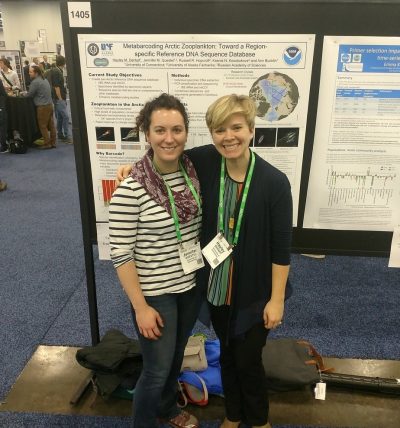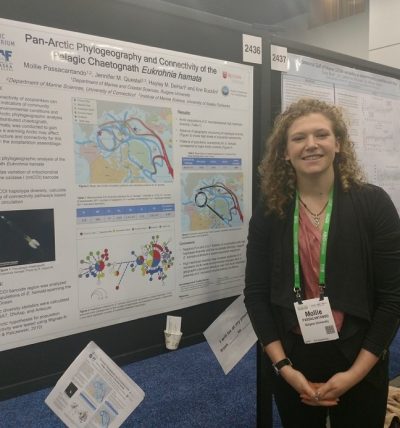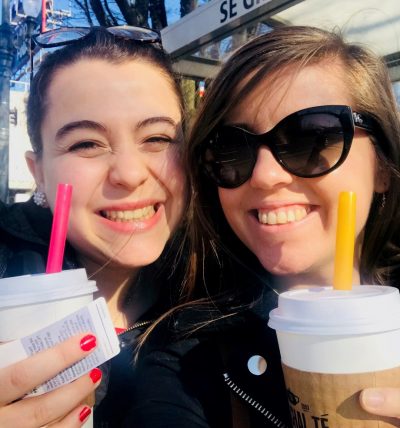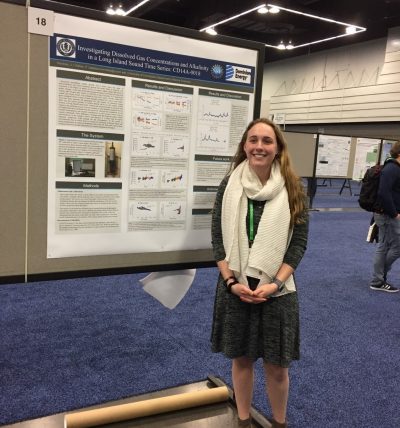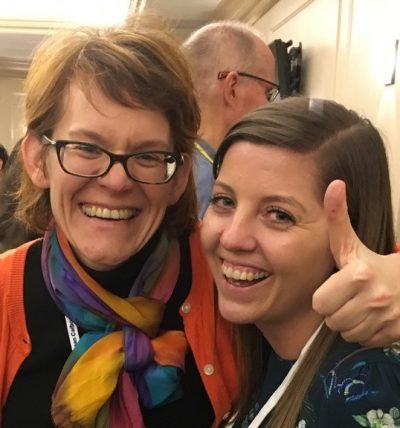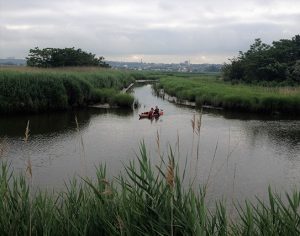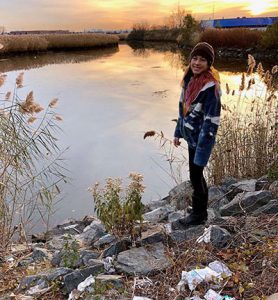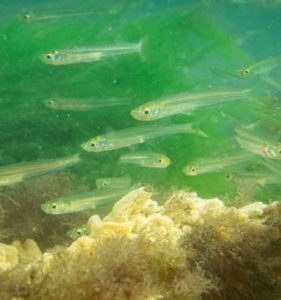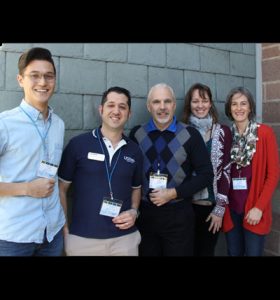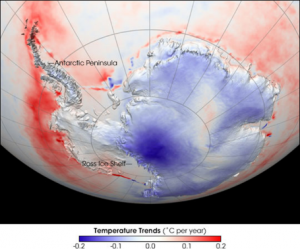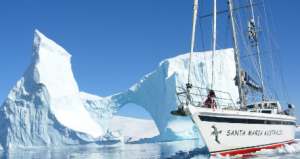Building off of her Ph.D. and postdoctoral research in Marine Sciences, Kaylan (Kate) Randolph, from the Dierssen COLORS Lab, was recently awarded a NASA New Investigator Program in Earth Sciences grant to characterize the hyperspectral reflectance of breaking waves with subsurface turbulent kinetic energy dissipation rates, and air entrainment as a function of physical forcing conditions. Kate (pictured on the R.V. Laurence Gould in Punta Arenas, Chile with collaborator Ale Cifuentes-Lorenzen) will be deploying above-water autonomous hyperspectral radiometers from the Air-Sea Interaction Tower at Martha’s Vineyard Coastal Observatory (WHOI). These measurements will be paired with subsurface acoustical and optical instrumentation to tackle the physics behind ocean color. Kate’s ongoing efforts to study ocean surface physics also include active collaborations with Chris Zappa at Lamont-Doherty Earth Observatory and Ale Cifuentes-Lorenzen at UConn (pending NSF).
